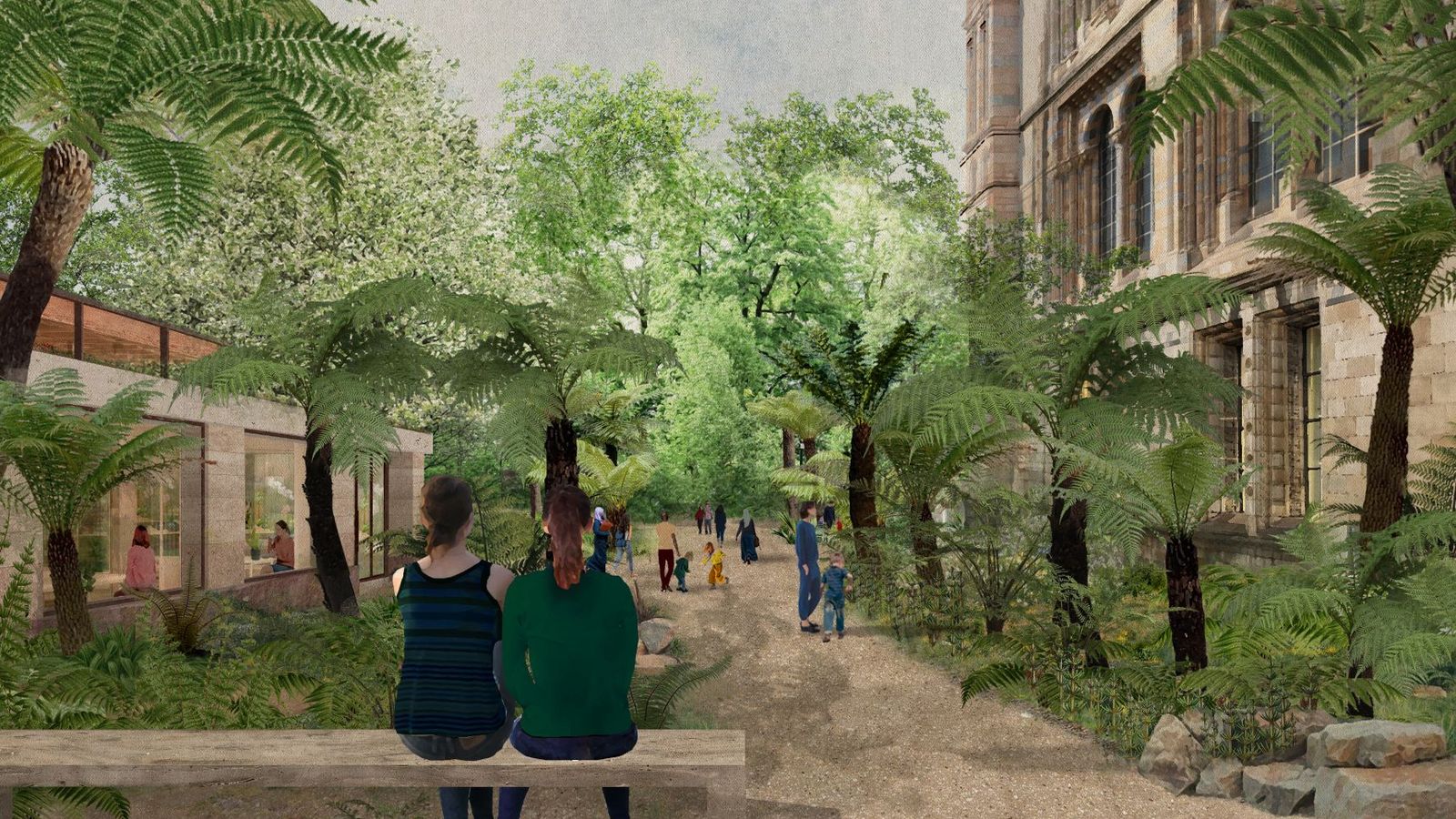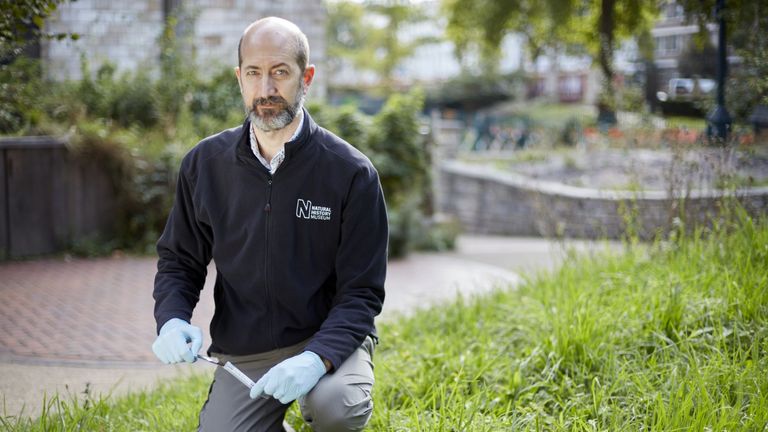The Natural History Museum is creating hi-tech gardens full of sensors to look at how wildlife reacts to changes in climate and can be better protected in our towns and cities.
The gardens will allow researchers to look at the kind of life that makes these environments home, from insects and frogs to tiny microscopic organisms invisible to the human eye.
Sensors installed across the site will monitor conditions like temperature, humidity and sound as the climate changes.
Although there are some five acres of grounds surrounding the site in London, for more than 25 years only one small corner has been used as a dedicated wildlife area.
Scientists are now working to create a garden across the entire area as part of a living gallery, which will open to the public towards the end of next year.
The gardens will tell the story of evolution of life on Earth, taking people through palaeontology sciences as they move from east to west.
The garden will also reflect the modern day, focusing on what can be done to protect nature.
Read more from Sky News:
UK is one of world’s most nature-depleted countries, new data finds
New ‘living laboratory’ launched by Kew Gardens to study biodiversity benefits in UK
Climate activist arrested after Captain Tom statue defaced
Working with Amazon Web Services, the museum in west London will also create a new data platform, the Data Ecosystem.
This will help researchers build a deeper understanding of the UK’s urban biodiversity, including its composition, how it relates to environmental conditions and how it responds to direct conservation action.
Dr John Tweddle, head of the Angela Marmont Centre for UK Biodiversity at the Natural History Museum, said: “We’re really trying to build as much information as we can around the richness of wildlife we have in our gardens so we can start to track how and why it’s changing.”
He continued: “And then use that in a really positive way to help recover this nature in towns and cities, whether that’s us or whether it’s individuals and community groups.”
He added the museum’s scientists are “excited” to have the opportunity to “be at the cutting edge of ecology within and around our own site by bringing together these different methods and starting to look at how we can analyse very big, very different datasets to really explore these patterns in nature, and then apply it for conservation and communicate that to people visiting”.
Researchers hope to observe as wide a diversity of life as possible, including common frogs, toads and smooth newts in the ponds, azure damselflies, willow emerald damselflies, bluebells, and birds such as robins and goldfinches in the wooded areas.
Hundreds of pollinating insect and wildflower species in the meadow and chalk grassland, including up to 20 species of bumblebee, will also form part of the study.

